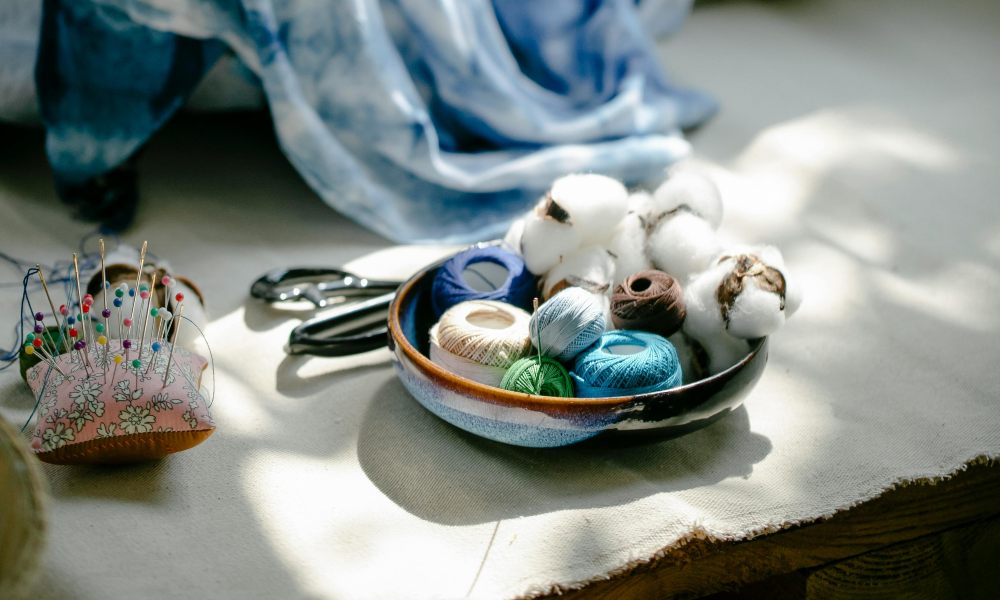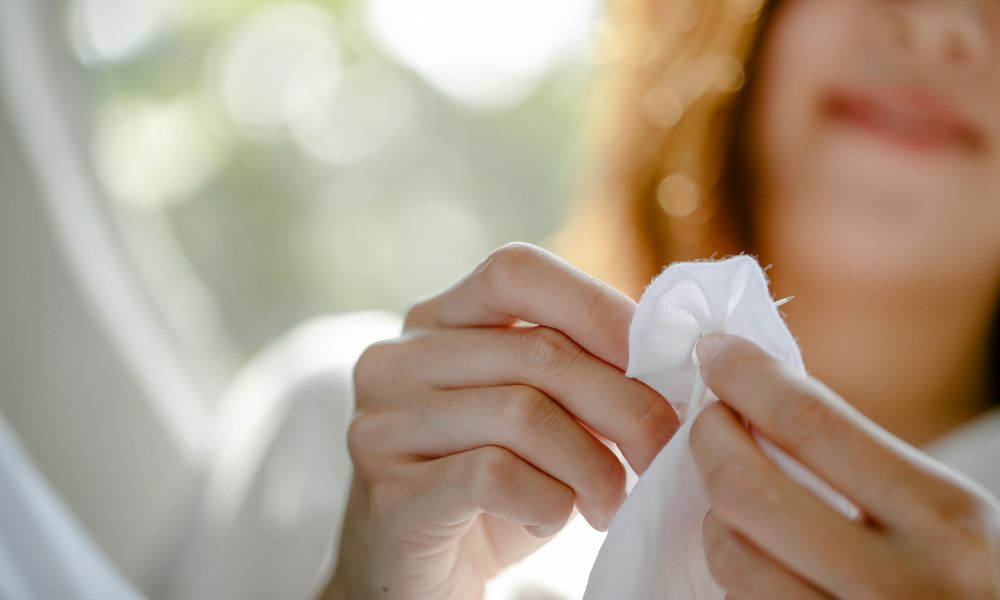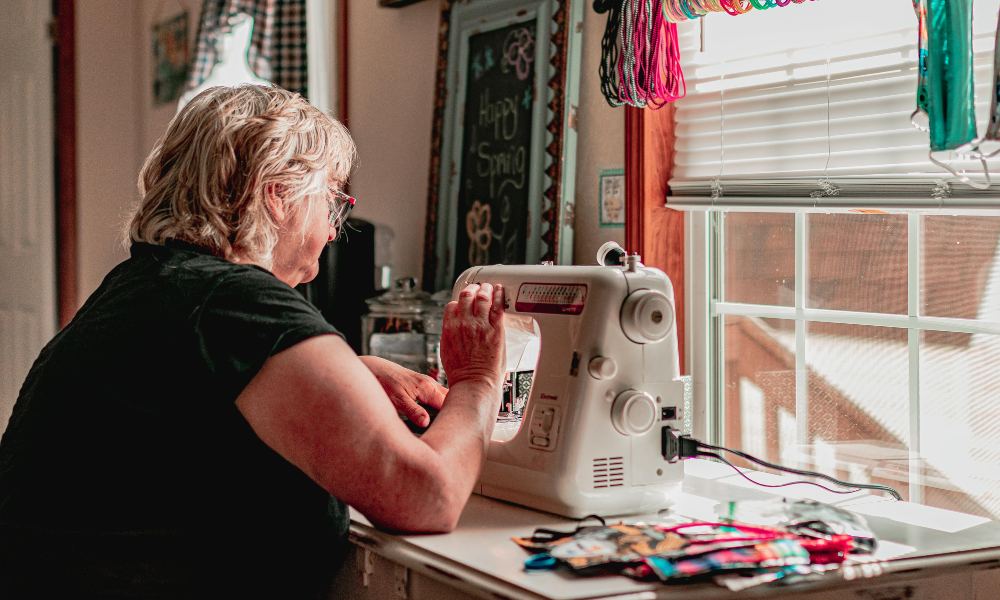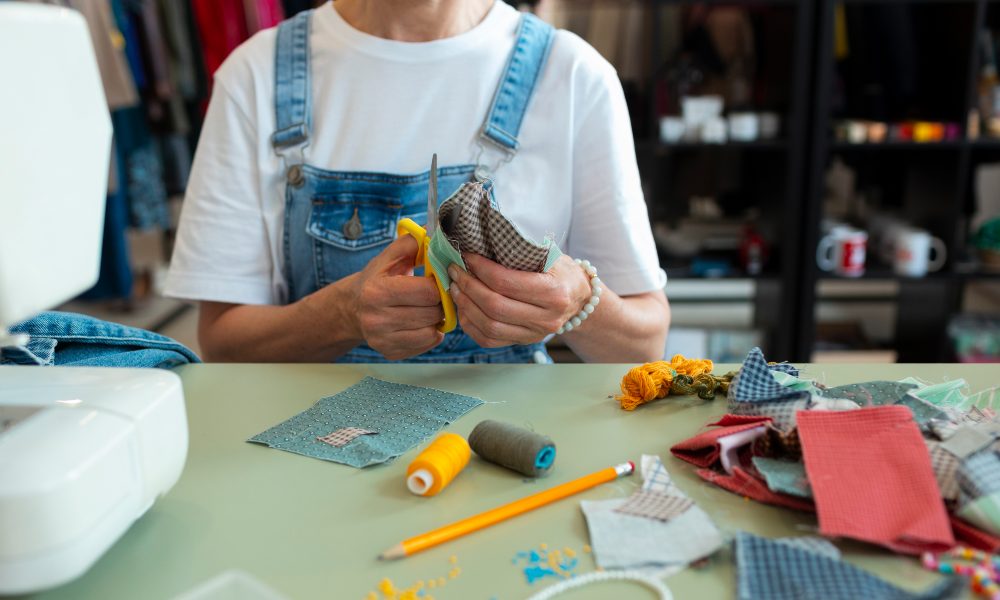Have you ever wanted to mend a torn garment, create a DIY accessory, or simply experiment with the art of needlework? If so, mastering the fundamentals of hand sewing with a needle is an indispensable skill. Hand sewing has become a cherished and sustainable practice in an age where fast fashion dominates. It’s an excellent guide for novices and experienced crafters who want to improve their sewing abilities. With the help of this guide, you’ll learn the necessary techniques and gain knowledge to start creating textile art using a simple needle.
Why Learn to Sew with a Needle?
The Joy of Handcrafted Items
There’s an unparalleled sense of accomplishment that comes from creating something with your own hands. Hand sewing allows you to imbue each piece with your unique touch, transforming ordinary fabrics into personalized treasures. From mending a beloved garment to crafting bespoke gifts, the process becomes a meditative and therapeutic experience.
Cost Savings and Sustainability
Embracing the art of hand sewing not only nurtures your creativity but also promotes a more sustainable lifestyle. By repairing and repurposing textiles, you can extend the lifespan of your possessions, reducing waste and saving money in the process. Moreover, handcrafted items often boast superior quality and durability compared to mass-produced alternatives.
A Therapeutic and Mindful Activity
In our fast-paced world, hand sewing offers a welcome respite from the hustle and bustle. Performing repetitive movements while concentrating on a task can lead to a state of mindfulness, which can help you disconnect from the anxieties of daily life and focus solely on the present moment. This therapeutic activity can promote relaxation, boost concentration, and cultivate a sense of calm.
Essential Supplies for Hand Sewing
Before you embark on your hand-sewing journey, you must equip yourself with the right tools and materials. Here’s a breakdown of the essential supplies you’ll need:
Types of Needles and Their Uses
Sharp Needles
Sharp needles, also known as sharps or betweens, are the workhorses of hand sewing. Their elongated, slender shape and sharp points effortlessly glide through woven fabrics, making them ideal for mending, hemming, and basic construction tasks.
Betweens or Milliners Needles
These needles, with their elongated, slim shape and slightly rounded tips, are designed for delicate fabrics like silk or lightweight wool. They’re often used in millinery (hat-making) and fine needlework, allowing for precise stitch placement without damaging the fabric.
Embroidery Needles
As their name suggests, embroidery needles are specifically crafted for intricate embroidery work. Their elongated eyes and sharp points enable smooth passage through tightly woven fabrics, ensuring your decorative stitches are executed with precision and elegance.
Thread Options and Recommendations
Cotton Thread
Cotton thread is a versatile and durable choice for most hand-sewing projects. Its natural fibers and matte finish make it an excellent option for visible stitches on garments or quilting projects. Additionally, cotton thread is available in various colors, allowing you to blend or contrast with your fabric seamlessly.
Polyester Thread
Polyester thread boasts exceptional strength and resilience, making it an ideal choice for heavy-duty applications or projects that require frequent washing. Its smooth texture and consistent thickness ensure even stitch formation, while its resistance to fading and fraying adds longevity to your handmade creations.
Silk Thread
For intricate embroidery or delicate needlework, silk thread is a luxurious option. Its lustrous sheen and delicate nature lend an elegant touch to your projects, making it a favorite among embroidery enthusiasts and those seeking luxury in their handcrafted pieces.
Additional Tools and Notions

Aside from needles and thread, a well-stocked sewing kit should include:
- Sharp scissors or thread snips for precise cutting
- Fabric marking tools (chalk, erasable pens, or tailor’s wax)
- Thimbles to protect your fingers during hand sewing
- Pins or Wonder Clips for securing fabric layers
- A needle threader for effortless threading
- A seam ripper for correcting mistakes or unpicking stitches
With these essential supplies at your fingertips, you’ll be ready to tackle any hand-sewing project confidently and precisely.
Step-by-Step Guide to Hand Sewing
Now that you’ve gathered your supplies, it’s time to dive into hand sewing. Follow these step-by-step instructions to master the fundamental techniques:
Preparing the Fabric and Thread
- Prewash and iron your fabric to ensure it’s clean, wrinkle-free, and ready for sewing.
- Cut your thread to a manageable length (approximately 18-24 inches) to prevent tangling.
- Thread your needle by passing the thread through the eye, leaving a tail of several inches at the end.
- To prevent the thread from slipping through the fabric, make a knot at the end of the tail.
Basic Hand Sewing Stitches
Running Stitch
The running stitch is a versatile and straightforward technique that has formed the foundation of many sewing projects. The process involves passing the needle straight into and out of the fabric to create a series of evenly spaced stitches. The technique requires a continuous movement of the needle along a straight line.
Backstitch
The backstitch is commonly utilized for creating robust and long-lasting seams and for appliqué work. It involves stitching backward, with each stitch overlapping the previous one, creating a continuous line of reinforced stitches.
Whipstitch
The whipstitch is a robust stitch commonly used for joining or finishing edges, such as hemming or appliqué. It involves wrapping the thread around the edge of the fabric, creating a secure and decorative finish.
Finishing Techniques
Once you’ve mastered the basic stitches, you must learn how to finish your hand-sewing projects properly. Techniques like knotting, backstitching, and burying knots ensure your stitches are secure and your projects look professional.
Advanced Hand Sewing Techniques
As you gain confidence and experience, you can explore more advanced hand-sewing techniques to take your creations to the next level:
Appliqué
Appliqué involves cutting shapes or motifs from one fabric and attaching them to another using decorative stitches. With this method, you can produce detailed patterns, customized decorations, and distinct fabric artwork.
Embroidery
Embroidery is the art of decorating fabric with intricate needles and threadwork. Embroidery has the capability to add depth, texture, and visual interest to your projects, whether it’s intricate floral patterns or bold geometric designs.
Quilting
Quilting combines the art of piecing together fabric blocks with layers of batting and backing to create warm, insulating textiles. Hand quilting adds a personal touch and a sense of tradition to this centuries-old craft.
Caring for Your Handmade Items
After investing time and effort into your hand-sewing projects, proper care is essential to ensure their longevity and beauty:
Proper Storage
Store your handmade items in a cool, dry place, away from direct sunlight and moisture. Consider using acid-free boxes or fabric storage bags to prevent discoloration or damage.
Cleaning and Maintenance
Follow the care instructions specific to the materials used in your project. For delicate items, hand washing or spot cleaning may be recommended. Regular maintenance, such as trimming loose threads or reinforcing worn areas, can extend the life of your handmade treasures.
FAQs:
What is the best type of needle for hand sewing?
The choice of needle depends on the fabric and project. For woven fabrics, sharp needles or betweens work well. Embroidery needles are ideal for delicate fabrics, while milliners needles are suitable for lightweight wool or silk.
How do I prevent skipped stitches when hand sewing?
Skipped stitches can occur due to improper needle size, dull needles, or not keeping the thread taut while sewing. It’s essential to match the needle size with the fabric, ensure the needles are sharp, and maintain consistent thread tension.
Can a needle intended for sewing machines be used for hand sewing?
While sewing machine needles can be used for hand sewing in a pinch, they are not designed for the task. Hand-sewing needles have elongated eyes and sharper points, making them easier to manipulate and less likely to create snags or holes in the fabric.
What is the best way to start and finish hand-sewing stitches?
Begin by knotting the thread at the tail end and taking a few backstitches to secure it. When finishing, take a few backstitches and knot the thread on the wrong side of the fabric, or run the needle through the previous stitches to bury the knot.
How can I prevent hand sewing from puckering the fabric?
Puckering can occur when the stitches are too tight or uneven. Use a longer stitch length, keep the thread taut but not too tight, and avoid pulling the thread excessively while sewing.
Conclusion
Sewing with a needle is a timeless skill that can bring immense satisfaction and countless creative possibilities. With some practice and patience, you’ll be well on your way to crafting beautiful, one-of-a-kind pieces. Now it’s your turn – what will you create?
Has this comprehensive guide ignited your passion for hand sewing? Do you have any tips or techniques to share with fellow needle enthusiasts? We’d love to hear your thoughts and experiences in the comments below!
***
Main image: pexels




